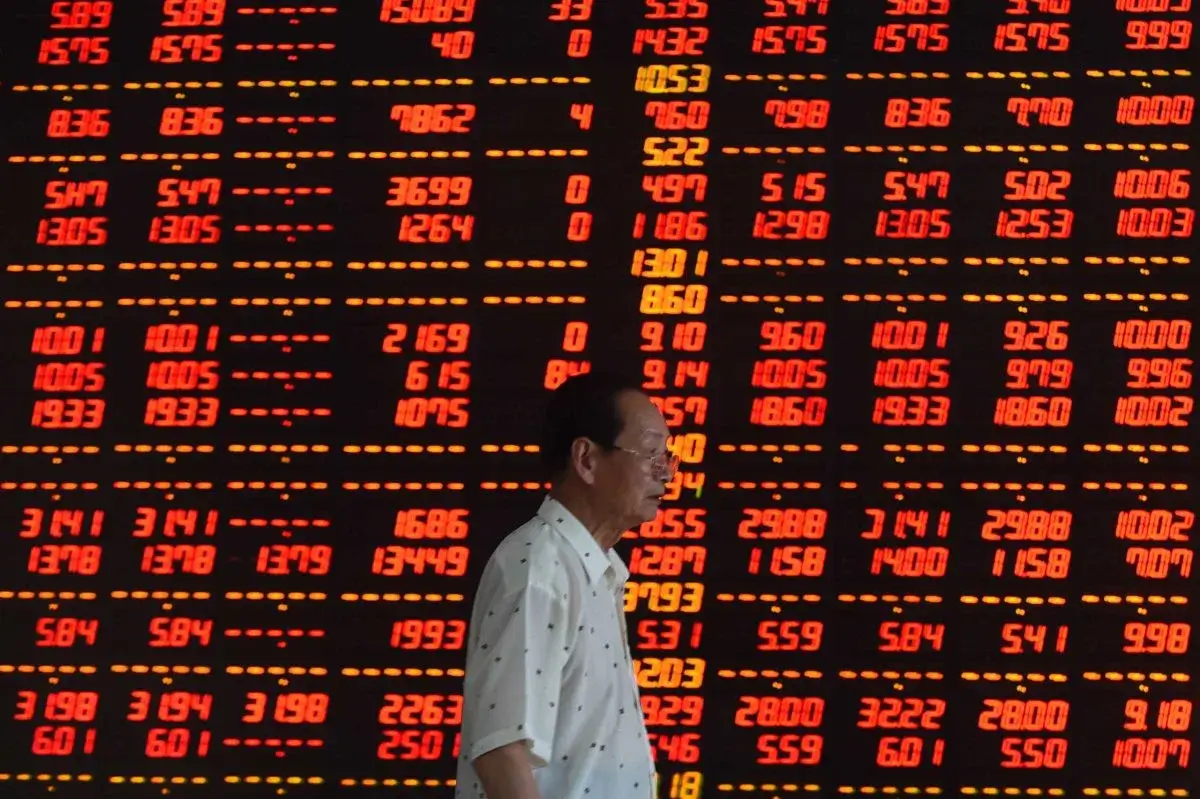U.S. Recession Warning? Key Market Indicator Nears Critical Level
25.03.2025 9:00 2 min. read Kosta Gushterov
A key economic indicator is flashing warning signs as uncertainty looms over financial markets.
The Dow Jones to Gold Ratio, which tracks the balance between equities and gold, is nearing a level that has historically preceded major recessions. Analysts warn that similar patterns emerged before downturns like the Great Depression, the 2008 crisis, and the COVID-19 crash.
This ratio reflects how many ounces of gold are needed to match the Dow Jones Industrial Average. A decline signals growing investor preference for gold, often a reaction to stock market weakness. As 2025 unfolds, the ratio is edging toward a critical threshold, fueling concerns that a significant shift may be underway.
Market sentiment has turned increasingly cautious. Goldman Sachs now sees a 20% chance of a U.S. recession, up from 15%, citing potential trade disruptions. Meanwhile, a Bank of America survey found that 55% of fund managers rank a global recession as their top risk, with rising cash reserves indicating a move toward safer assets.
Consumer confidence is slipping, as reflected in a sharp decline in the University of Michigan’s Sentiment Index. Leading economic indicators are also weakening—industrial production, retail sales, and home purchases are all slowing.
On a global scale, sluggish growth in key markets like China and Europe is putting additional pressure on U.S. exports. With multiple warning signs stacking up, fears of an economic downturn continue to build.
-
1
U.S. PCE Inflation Rises for First Time Since February, Fed Rate Cut Likely Delayed
27.06.2025 18:00 1 min. read -
2
Key U.S. Economic Events to Watch Next Week
06.07.2025 19:00 2 min. read -
3
Gold Beats U.S. Stock Market Over 25 Years, Even With Dividends Included
13.07.2025 15:00 1 min. read -
4
U.S. Announces Sweeping New Tariffs on 30+ Countries
12.07.2025 16:30 2 min. read -
5
US Inflation Heats Up in June, Fueling Uncertainty Around Fed Cuts
15.07.2025 16:15 2 min. read
US Inflation Heats Up in June, Fueling Uncertainty Around Fed Cuts
U.S. inflation accelerated in June, dealing a potential setback to expectations of imminent Federal Reserve rate cuts.
Gold Beats U.S. Stock Market Over 25 Years, Even With Dividends Included
In a surprising long-term performance shift, gold has officially outpaced the U.S. stock market over the past 25 years—dividends included.
U.S. Announces Sweeping New Tariffs on 30+ Countries
The United States has rolled out a broad set of new import tariffs this week, targeting over 30 countries and economic blocs in a sharp escalation of its trade protection measures, according to list from WatcherGuru.
Key U.S. Economic Events to Watch Next Week
After a week of record-setting gains in U.S. markets, investors are shifting focus to a quieter yet crucial stretch of macroeconomic developments.
-
1
U.S. PCE Inflation Rises for First Time Since February, Fed Rate Cut Likely Delayed
27.06.2025 18:00 1 min. read -
2
Key U.S. Economic Events to Watch Next Week
06.07.2025 19:00 2 min. read -
3
Gold Beats U.S. Stock Market Over 25 Years, Even With Dividends Included
13.07.2025 15:00 1 min. read -
4
U.S. Announces Sweeping New Tariffs on 30+ Countries
12.07.2025 16:30 2 min. read -
5
US Inflation Heats Up in June, Fueling Uncertainty Around Fed Cuts
15.07.2025 16:15 2 min. read


